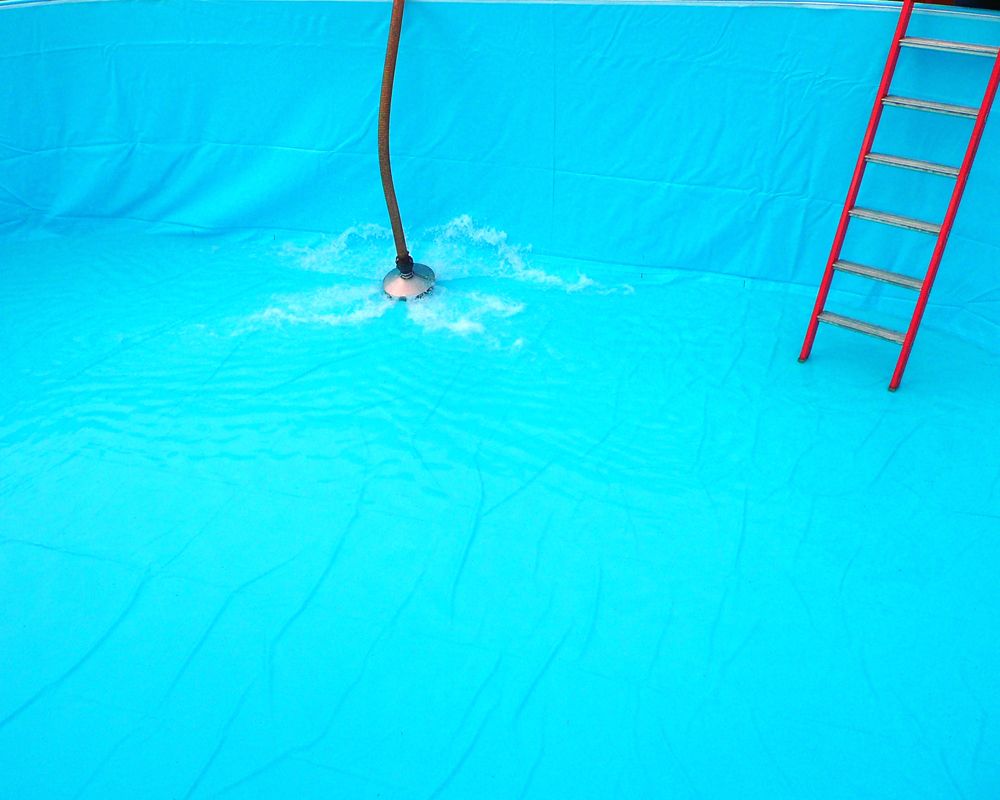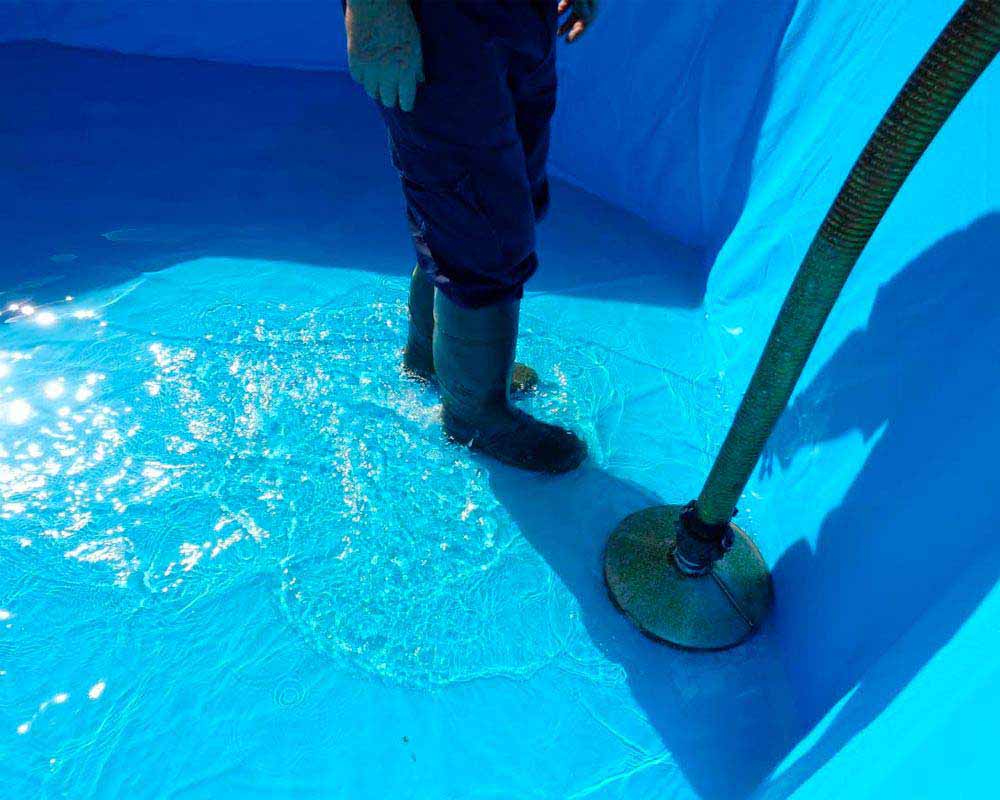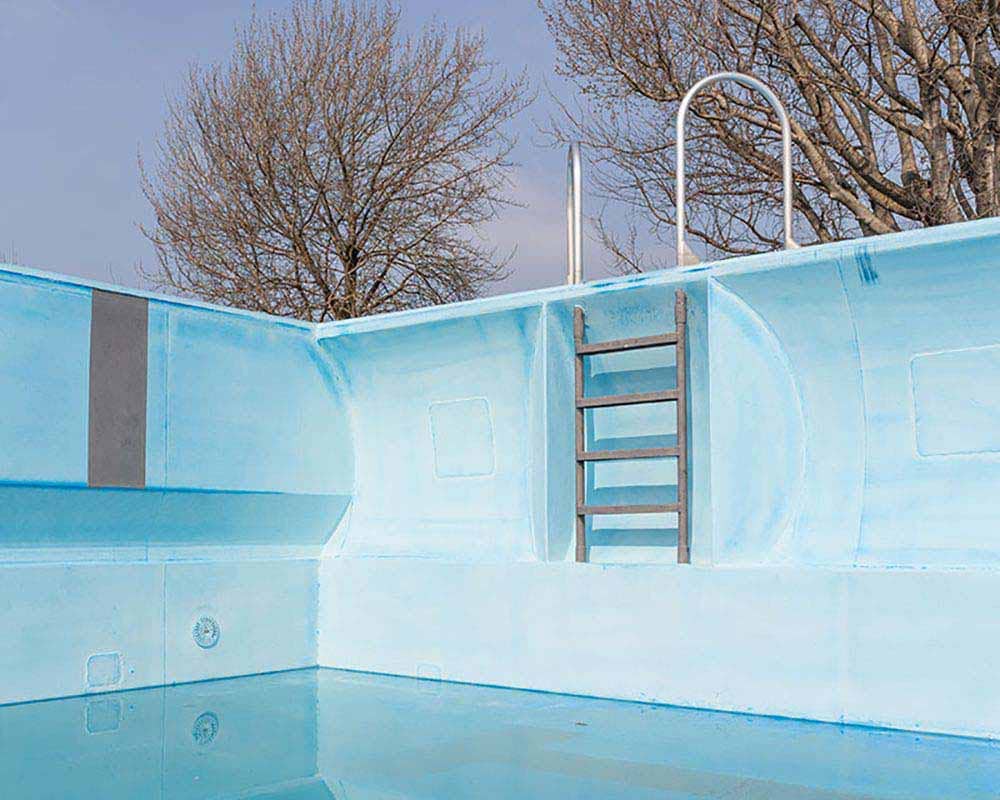There might come the time when you consider essential to remove the water from your pool, something not always advisable, due to the risks that it entails. Some scenarios in which our pool could need draining are, for instance, an alarming amount of dissolved solids, a necessary repair, or the closeness of a cold winter, which because of the frost, could damage our pool.
In most cases, such as for example, if you live in a high phreatic zone, or if you are not sure which type of pool or equipment you have, you should not empty our pool without professional help.
Remember that there is no golden rule for every pool and situation. In this article, we just offer a general idea of the pool draining task. If you have the slightest doubt, make a professional take a look into your pool.
How to drain a pool with a pump
- If you do not have a sump pump, you can rent a submersible pump.
- You must locate the drainage pipe in the sewers and connect it to the pump with a hose.
- Check that the hydrostatic valve is open.
- Place the hose of the pump in the deepest part of your pool.
- Start draining water, monitoring all the process in order to stop it if any eventuality happens.
- Remember that this method is not suitable for all the pools. For instance, the draining of a vinyl pool is much more complicated, due to the fragility of the liner.
- If you have a fiberglass pool, never try to empty it, since they are designed to be constantly full of water. Call a specialist if you intend to empty your fiberglass pool.
How to drain a pool without a pump
If you must empty your pool but you cannot use a submersible pump, you still have some alternatives.
The first and most tedious is to ask for the help of as many friends as plastic buckets you dispose. You can picture the rest. If the size of your pool is humble, you should have no trouble getting rid of the water, but remember that getting rid of large amounts of water in the street is forbidden, so you should find a proper place to pour it.
The most useful method is to get rid of your pools water with a garden hose:
- First, you have to fix one of the host’s ends to a heavy object, in order to make sure that it does not get out of the pool.
- Place the heavy object in the deepest part of the pool.
- Keep the hose free of knots and folds.
- If possible, place the output end of the hose in a lower height than the end inside the pool.
- Suck the air of the hose through the output end, until you feel the water in your mouth.
- Retire manually the remaining water.
Finally, here are some advices to take into account if you plan to drain your pool soon:
Subterranean waters can destroy completely your pool. Do not carry any action if you have the slightest doubt about the relationship between your pool and the phreatic level of the field.
If your empty your pool, fill it again the same day, so neither the sun nor the pressure damage it. Once full, dedicate at least one day to settle the chemical levels.
If you want to use the water from your pool to water your garden, keep your pool free from chemical substances for at least a week before the draining. This way, you will not damage the vegetation.




Mejor que “Con la boca en el extremo de salida, aspirar aire desde la manguera hasta sentir el agua en nuestra boca”, se puede conectar el extremo libre de la manguera a un grifo para llenarla de agua. hasta que salga por el extremo sumergido en la piscina, pasado este momento, desconectar la manguera del grifo y dejarla en el sumidero y ya sale el agua de la piscina. La clave consiste en que la manguera se llene de agua y, para ello, la puedes llenar fuera, tapar las bocas de los extremos (la del grifo ya está tapada) y destapar que el extremo que vas a meter en la piscina dentro del agua de la piscina.